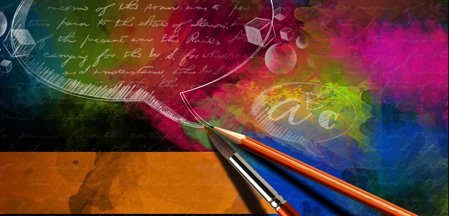
Our understanding of the brain has grown immensely in the past few decades, with discoveries being made at a rapid rate which give us insight into areas such as perception, cognition and language. Visual language is essentially non-verbal communication, where images and codes are built up in a memory bank which can also be recalled.
The use of shortened words, phrases and pictures has become increasingly popular in modern times, with contractions becoming the norm as sites such as Twitter demand a small character limit. Keeping things short, simple and concise has always been considered the best method of communication, right back to the time when telegrams were sent in Morse code. Today we have an Internet and smartphone revolution, which has been coupled with touch-screen technology as the norm. Small icons have quickly taken over as the best means of conveying an entire topic.
We just have to look at the standard icons included on an iPhone, for example, to understand this more easily. The email icon is an envelope which represents the traditional means used for centuries across the world. A symbol, just like a piece of artwork or a sketch, can break the language barriers and convey meaning that is universal. The cogs and gears image used for ‘Settings’ is used across platforms as it represents the mechanics of what is actually driving the smartphone or tablet. It evokes images of old mechanical systems with which the world has become so familiar, and now even music functions are symbolised by a classic single bar note.
Designers often make use of a branch of semiology – from the word ‘semantics’ – called Product Semiotics. This is the study of signs and imagery that convey particular meanings when seen; a snake elicits fear but a kitten denotes playfulness. Particular images become locked into our minds, so we can recall them easily through association – a speech bubble for messaging features and a plain handset from the original telephone for calling. Our brains build their own visual dictionaries as we age, and the majority of the planet is still young enough to remember envelopes and stamps.
The Austrian philosopher, Wittgenstein, believed that we store these visual imprints deep within the brain, but in families rather than individual pictures; the word ‘game’, for example, brings meaning to terms such as word game, Olympic Games, ball games and board games. Certain features can be identified that allow us to classify objects in our brain, so using a symbol is likely to elicit an emotional and intellectual response; for example, travel apps often use a plane wing or the tail of a plane as a symbol automatically recognisable as flying or booking tickets.
A factor known as graphicacy has been coined by psychologists in the past few years, and while it hasn’t caught on in everyday language, it highlights the importance of both the visual, numerical and literacy values together. These factors work to give us something above and beyond what animals are capable of in terms of communicating, and designers will continue to implement the classic designs we have grown so accustomed to. But what will be the ‘normal’ symbols for future generations?

![Languages of America [INFOGRAPHIC]](https://businesslanguageservices.co.uk/wp-content/uploads/2017/07/bls_Infographic-611x428.png)